Table of Contents
Ready to ditch the crowded gym and get fit at home? You're in the right place! This article is your guide to an easy at home kettlebell workout that’ll whip you into shape without needing a ton of space or fancy equipment. We'll start with the basics, like how to hold a kettlebell properly (it's more important than you think!), and then we'll move onto a simple 20-minute workout that'll get your heart pumping. You'll learn six essential beginner exercises, and I will tell you about the best type of kettlebell for you. Thinking about leveling up? We've got you covered with an intermediate routine too. Plus, we'll tackle the big question: can kettlebells help you lose weight? (Spoiler: yes, but diet matters too!). So, grab your kettlebell (or get ready to buy one), and let's get started. Prepare to feel stronger, more toned, and maybe even a little bit awesome.
Getting Started: Your Easy At Home Kettlebell Workout
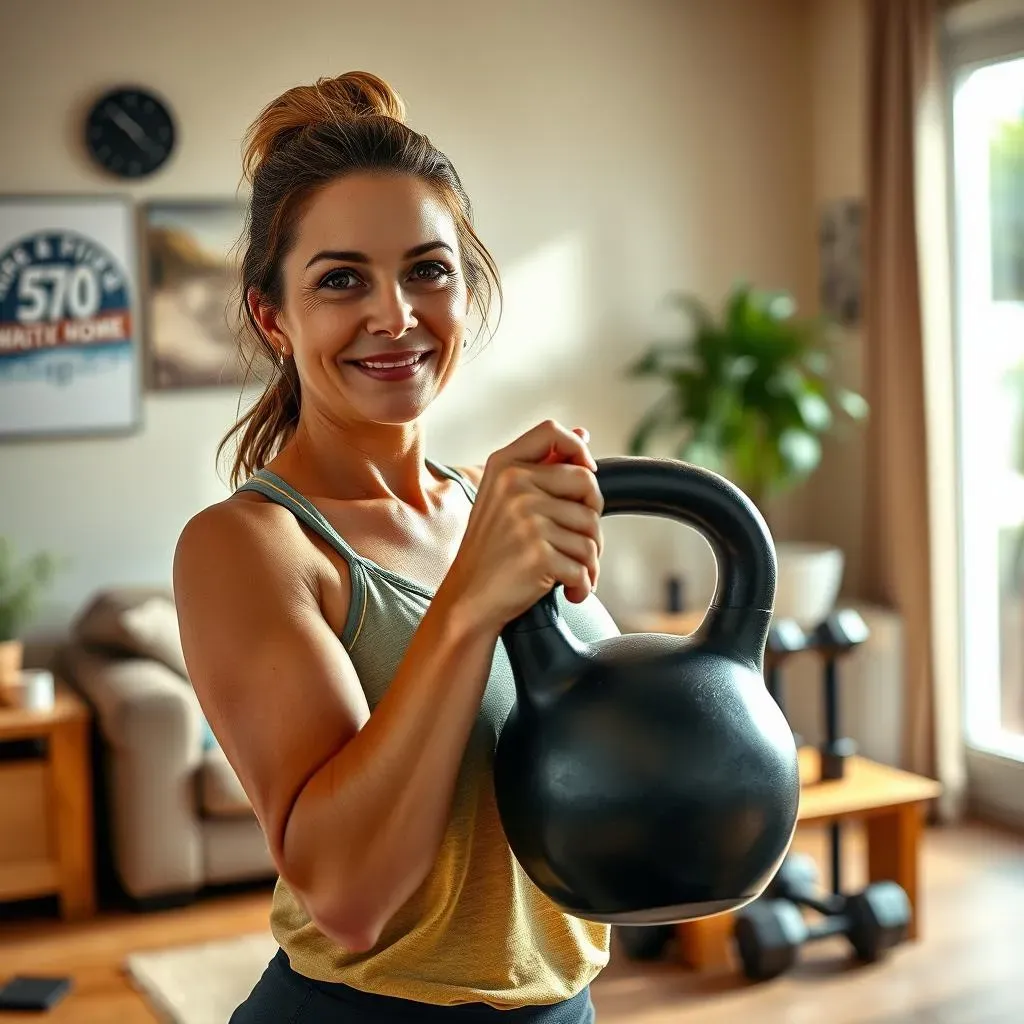
Getting Started: Your Easy At Home Kettlebell Workout
Okay, so you're thinking about jumping into the world of kettlebells, huh? Awesome choice! I'm telling you, it's a game changer. Forget those complicated machines at the gym. Kettlebells are like the Swiss Army knives of fitness – they're versatile, effective, and you can use them pretty much anywhere. The best part? You don't need a huge space or a ton of equipment to get a killer workout. We are talking about an easy at home kettlebell workout after all. All you need is a kettlebell, a little bit of space, and a can-do attitude. This isn't about becoming a bodybuilder overnight; it's about building strength, burning calories, and feeling amazing. And trust me, once you get the hang of it, you'll be hooked.
Mastering the Basics: Kettlebell Holds and Beginner Moves
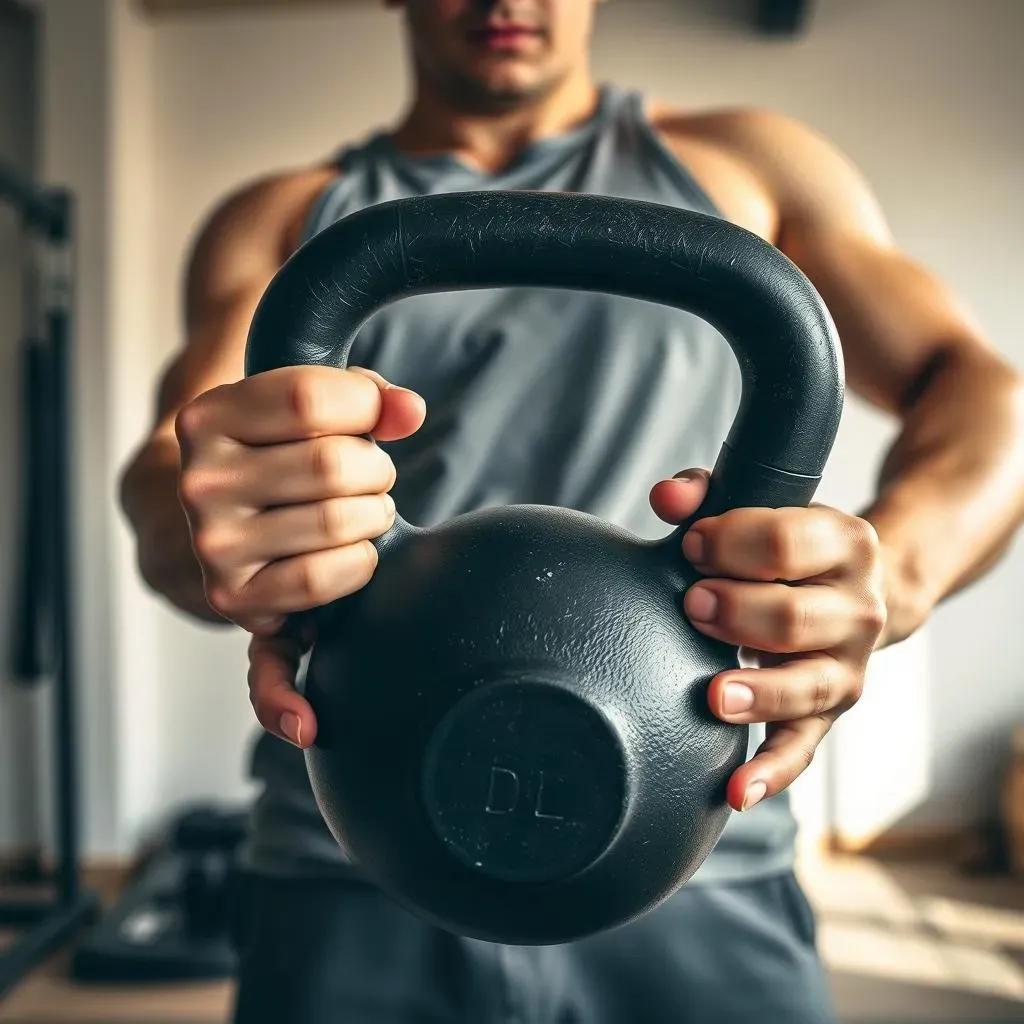
Mastering the Basics: Kettlebell Holds and Beginner Moves
The All-Important Grip
Before you start swinging that kettlebell around like a wild thing, let's talk about grip. It's not just about holding on tight, it's about holding on right. Think of it like shaking someone's hand - you want a firm grip, not a bone-crushing one. The most common grip is the standard overhand grip, where you wrap your fingers around the handle. But there's also the hook grip, where you hook your fingers around the handle, which some people find more secure, especially for heavier weights. Experiment a bit and see what feels most comfortable and secure for you. The key here is to keep your grip firm but relaxed; you don't want to be white-knuckling it the whole time. A good grip will prevent you from losing control of the kettlebell and help you engage the right muscles.
And hey, don't be afraid to use chalk if your hands get sweaty. I know it might seem a little extra, but trust me, it can make a huge difference, especially when you're doing a lot of reps. A little bit of chalk will keep your grip solid, and that'll let you focus on the exercise instead of worrying about the kettlebell slipping out of your hands.
Grip Type | Description | Best Use |
|---|---|---|
Overhand Grip | Fingers wrapped around the handle | Most exercises, good starting point |
Hook Grip | Fingers hooked around the handle | Heavier lifts, more secure grip |
First Moves: Getting Comfortable
Okay, now that we've got the grip down, let's talk about some basic moves. Forget about the crazy swings and snatches for now. We need to learn to walk before we run, or in this case, learn to lift before we swing. Start with kettlebell halos. Hold the kettlebell by the horns (the sides of the handle) and gently circle it around your head. It's like a little dance, but it's great for warming up your shoulders and getting your core engaged. Then, try goblet squats. Hold the kettlebell close to your chest and squat down. This move is a fantastic way to learn the squat pattern with a bit of extra weight. It'll help you build leg strength and improve your overall form.
Another great move for beginners is the deadlift. You can start with a Romanian deadlift (RDL) where you focus on hinging at your hips, keeping your back straight, and lowering the kettlebell towards the ground. These moves will get you feeling comfortable with the weight and prepare you for more complex exercises. Remember to take it slow, focus on your form, and don't be afraid to take breaks when you need them. It's all about progress, not perfection.
- Kettlebell Halos: Great for shoulder warm-up.
- Goblet Squats: Perfect for learning proper squat form.
- Romanian Deadlifts (RDLs): Focus on hip hinge, great for hamstrings.
The Best Kettlebell Weight for You and Types of Kettlebells
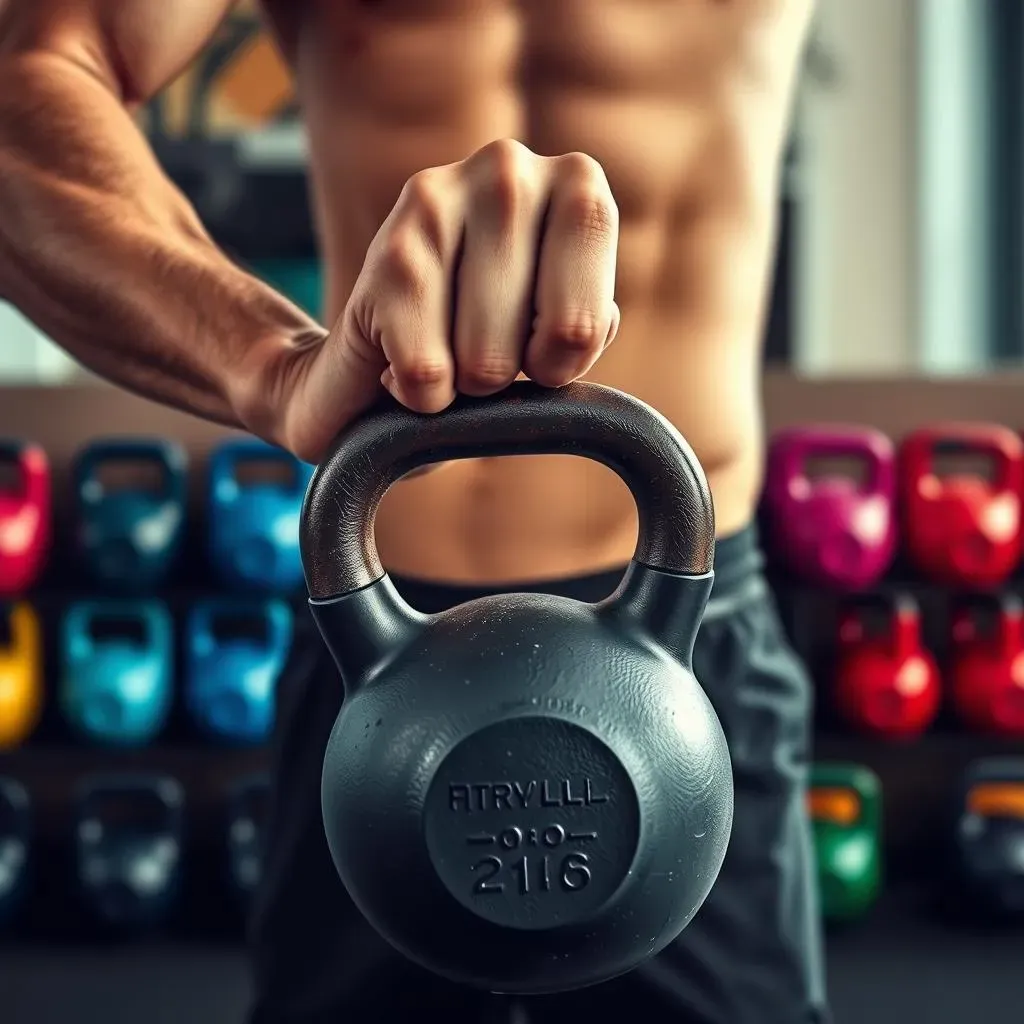
The Best Kettlebell Weight for You and Types of Kettlebells
Okay, so you're getting the hang of the moves, but now you're probably staring at a wall of kettlebells wondering, "Which one of you is coming home with me?" I get it. It's like walking into a candy store, but instead of sugar, it's all about steel. The good news is, picking the right kettlebell doesn't have to be a brain-buster. First, let's chat about types. You've got your standard cast iron kettlebells, which are great for pretty much everything. They’re durable, they’re classic, and they get the job done. Then you've got competition kettlebells. These are all the same size, no matter the weight, which is great if you’re planning on getting serious about kettlebell training. Think of them as the sleek sports cars of the kettlebell world.
Now, for the million-dollar question: what weight should you start with? This really depends on your current fitness level. If you’re a complete newbie, I’d suggest going lighter than you think you need. Seriously, it’s better to start too light than too heavy. You can always go up in weight, but starting too heavy can lead to injury. A good rule of thumb for most people is to start with a 16kg (35 lbs) kettlebell for men and a 12kg (25 lbs) kettlebell for women. This is just a general guideline, though. If you're already pretty strong, you might want to go a bit heavier, and if you're brand new to working out, you might want to go a bit lighter. Don't be shy about trying out a few different weights to see what feels right for you. Remember, it’s all about feeling challenged, not defeated.
Kettlebell Type | Description | Best For |
|---|---|---|
Standard Cast Iron | Varying sizes, durable | General fitness, beginners |
Competition Kettlebells | Same size regardless of weight | Advanced training, consistent feel |
Your 20Minute Easy At Home Kettlebell Workout
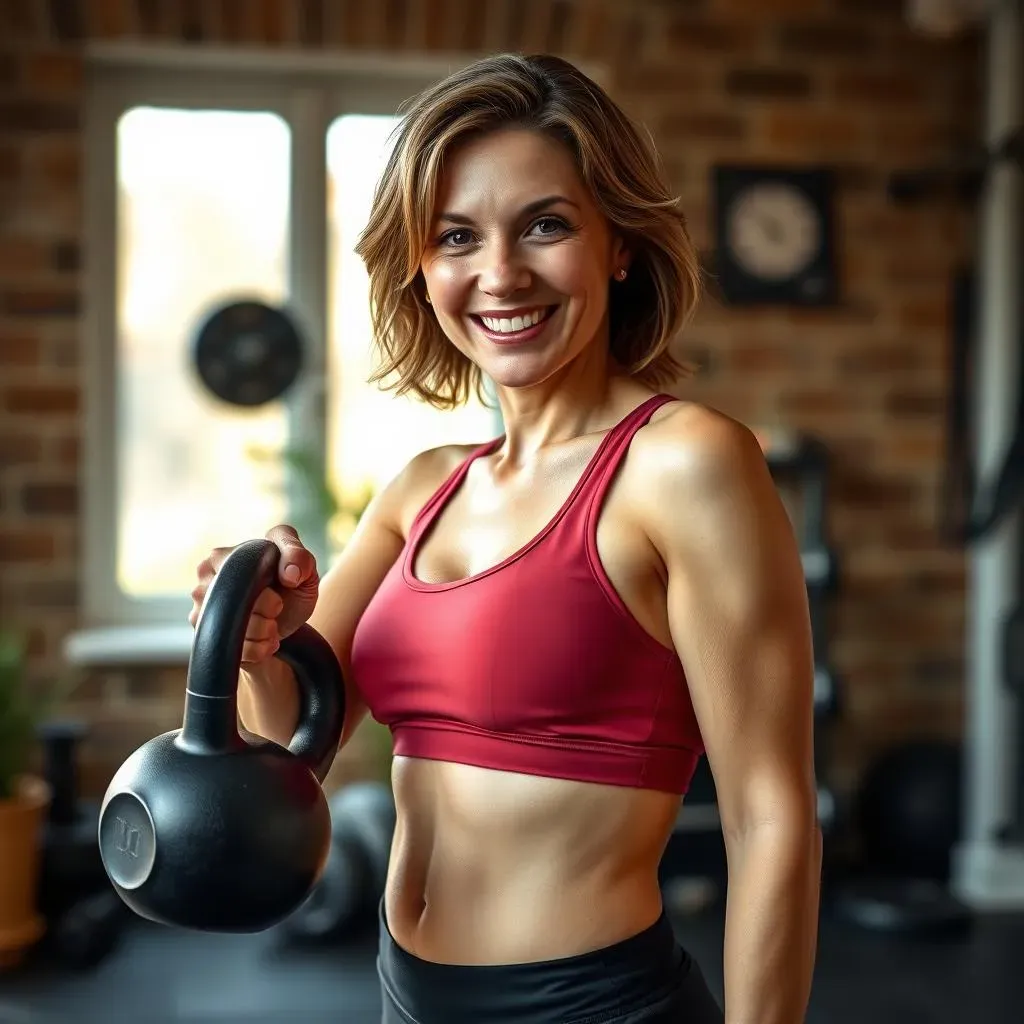
Your 20Minute Easy At Home Kettlebell Workout
The Warm-Up: Get Your Body Ready
Alright, let's get this show on the road! Before you start swinging that kettlebell like a pro, we need to get your body warmed up and ready to go. Think of it like prepping a car for a long drive—you wouldn't just jump in and slam the gas pedal, would you? We're going to start with some gentle movements to get the blood flowing and loosen up those muscles. A few minutes of arm circles, leg swings, and torso twists will do the trick. Don't overthink it; just move your body and get it ready for some action.
I like to add in a few bodyweight squats and lunges to really get the lower body activated. It's all about preparing your body for the workout ahead. Remember, a good warm-up is key to preventing injuries and getting the most out of your workout. So, let’s get moving.
The Main Event: Six Essential Exercises
Okay, now for the good stuff. This is where we put that kettlebell to work. Our 20-minute workout consists of six essential exercises that will work your whole body. We'll start with kettlebell halos, which are great for shoulder mobility and core engagement. Then, we'll move onto goblet squats, which are perfect for building leg strength and improving squat form. Next, we'll tackle overhead presses, which will work your shoulders and arms. For cardio, we'll do kettlebell swings, which are fantastic for burning calories and building power. If you have issue with the swing you can do Romanian deadlifts (RDL). We’ll then do bent-over rows to work your back and arms. And finally, we'll finish with front rack reverse lunges, which are great for legs and balance.
Remember, it's not about going as fast as you can; it's about maintaining good form and engaging the right muscles. Take your time, focus on each movement, and don't be afraid to take breaks when you need them. This is your workout, so make it work for you.
- Kettlebell Halos: 10 reps each direction
- Goblet Squats: 10-12 reps
- Overhead Presses: 8-10 reps each arm
- Kettlebell Swings or RDLs: 15 reps
- Bent Over Rows: 10 reps each arm
- Front Rack Reverse Lunges: 10 reps each leg
Cooling Down and Stretching
Alright, you did it! You powered through your 20-minute kettlebell workout. Now, it's time to cool down and stretch. This is just as important as the workout itself. Cooling down helps your body recover and reduces muscle soreness. A few minutes of light cardio, like walking in place, followed by some static stretches, will do the trick. Focus on stretching your major muscle groups, like your legs, back, and shoulders. Hold each stretch for about 30 seconds, and remember to breathe.
Stretching is a great way to improve your flexibility and prevent injuries. It's like giving your muscles a nice, relaxing massage after a hard workout. So, take a few minutes to cool down and stretch, your body will thank you. And remember, consistency is key. If you keep at it, you'll start to see some amazing results.
"The only bad workout is the one that didn't happen."
Taking It Up a Notch: Intermediate Kettlebell Exercises
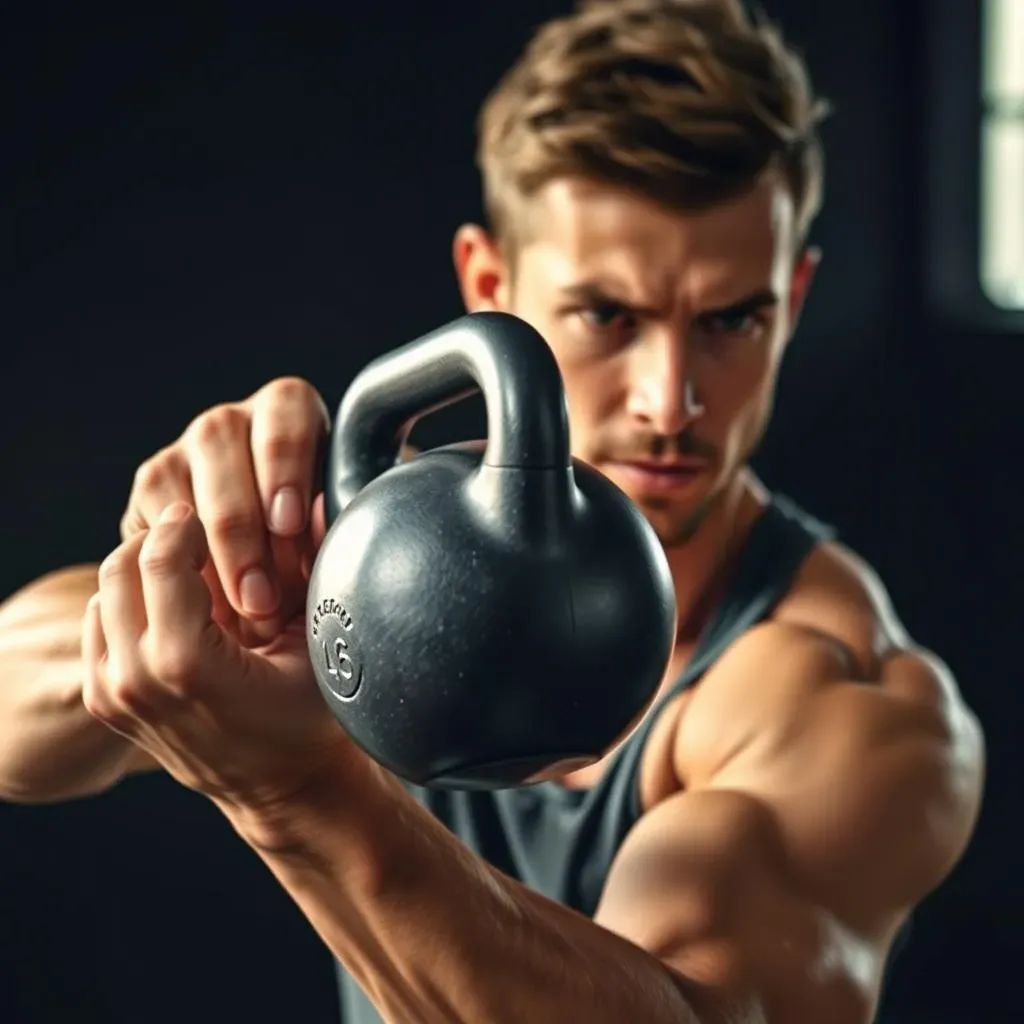
Taking It Up a Notch: Intermediate Kettlebell Exercises
Stepping Up Your Game
Alright, so you've mastered the basics, you're feeling stronger, and you're ready for a new challenge? Awesome! It's time to kick things up a notch with some intermediate kettlebell exercises. Think of this as moving from playing a simple tune on the piano to tackling a slightly more complex piece. We're not talking crazy-difficult, but we are talking about exercises that will challenge you a bit more and get you even better results. These moves will help you build more strength, improve your coordination, and burn even more calories. And hey, who doesn't want that?
We're going to move beyond the basic squats and swings and start incorporating some more dynamic movements. These aren't just about lifting weight; they're about control, power, and using your whole body. So, let's get ready to push your limits and see what you're truly capable of. Remember, it's all about progress, not perfection, so don't be afraid to try new things and challenge yourself.
Intermediate Moves to Try
Now, let's get into the nitty-gritty of some intermediate moves. First, we've got the kettlebell lateral goblet lunge. This move takes the basic lunge and adds a lateral component, which is great for working your inner and outer thighs. Then, we have renegade rows, which are fantastic for building core strength and upper body stability. You'll be in a plank position while rowing the kettlebell, making it a full-body challenge. And for a little something extra, we'll throw in some single-leg deadlifts, which are awesome for balance, coordination, and hamstring strength.
These exercises will build on the foundation you've already built with the beginner exercises, and they'll help you develop a more well-rounded level of fitness. Remember to take it slow, focus on your form, and don't be afraid to modify the exercises if you need to. It's all about finding what works best for you and pushing yourself just enough to see progress.
"The pain you feel today will be the strength you feel tomorrow."
Exercise | Description | Benefits |
|---|---|---|
Kettlebell Lateral Goblet Lunge | Lunge to the side while holding kettlebell | Inner and outer thigh strength, balance |
Renegade Rows | Plank position, row kettlebell | Core strength, upper body stability |
Single-Leg Deadlifts | Balance on one leg while deadlifting | Balance, coordination, hamstring strength |
Kettlebells for Weight Loss: Diet and Exercise
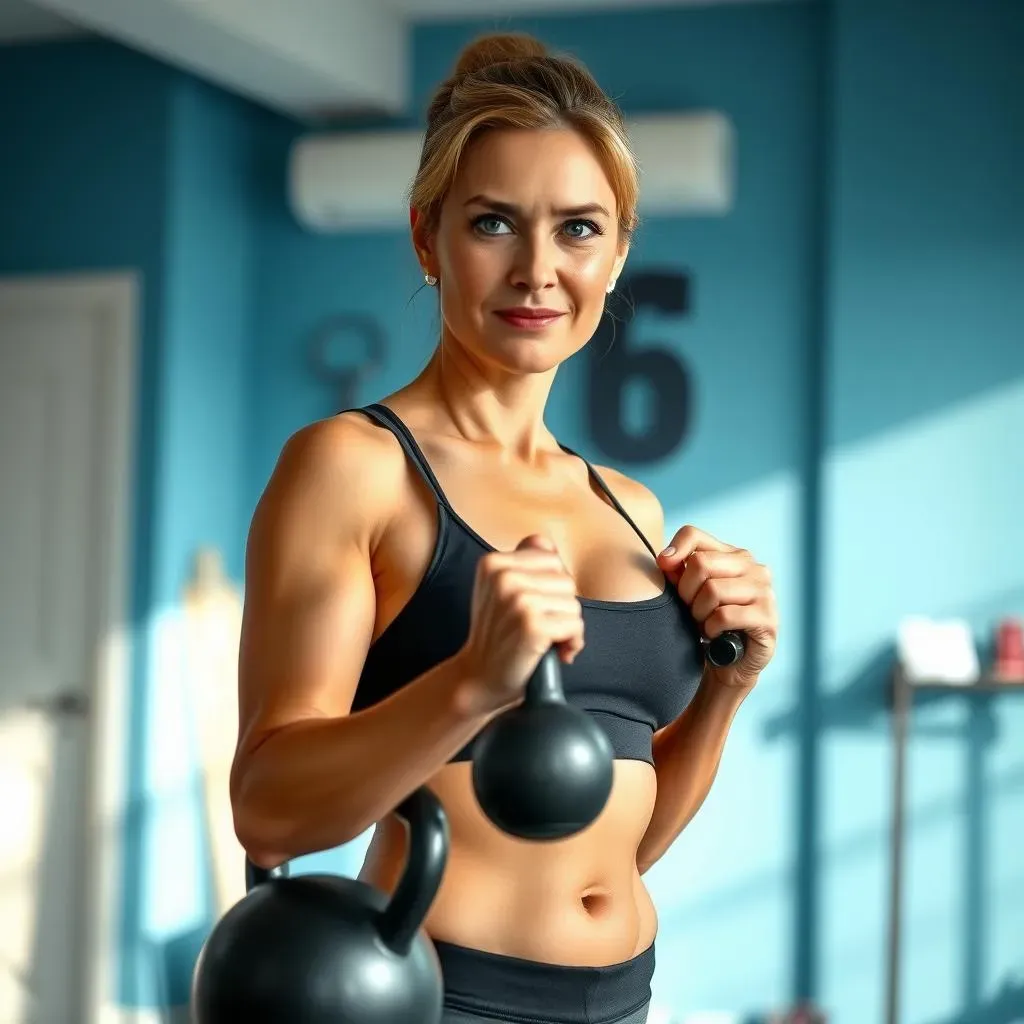
Kettlebells for Weight Loss: Diet and Exercise
Kettlebells: Your Weight Loss Allies
So, you're wondering if kettlebells can actually help you lose weight? The short answer is: absolutely! But here's the deal, it's not magic. Kettlebells are a fantastic tool for building strength and burning calories, which are both crucial for weight loss. When you're swinging, squatting, and pressing with a kettlebell, you're engaging multiple muscle groups at once. This means you're not just building muscle, you're also revving up your metabolism. The more muscle you have, the more calories you burn, even when you're not working out. It's like having a tiny furnace inside you, constantly burning through energy.
And let's be real, kettlebell workouts aren't exactly a walk in the park. They're intense, they're challenging, and they get your heart rate way up. This means you're not just building strength, you're also getting a killer cardio workout. This combo of strength and cardio is a recipe for weight loss success. However, here's the part people often miss: exercise alone isn't enough. You need to pair your kettlebell workouts with a healthy diet.
The Power of Nutrition
Okay, let's talk about food. I know, it's not as fun as swinging a kettlebell around, but it's just as important, if not more so. You can do all the kettlebell workouts in the world, but if you're eating junk food all the time, you're not going to see the results you want. Think of your diet as the fuel for your body. You wouldn't put bad fuel in a race car and expect it to perform well, would you? The same goes for your body. You need to fuel it with good, nutritious food to get the best results.
This doesn't mean you have to go on some crazy diet or completely deprive yourself of all the foods you love. It just means making smart choices most of the time. Focus on eating plenty of fruits, vegetables, lean proteins, and whole grains. Cut back on processed foods, sugary drinks, and excessive amounts of unhealthy fats. Small changes can make a big difference. And remember, it's about building sustainable habits, not quick fixes. When you combine a solid kettlebell routine with a healthy diet, you're setting yourself up for long-term success.